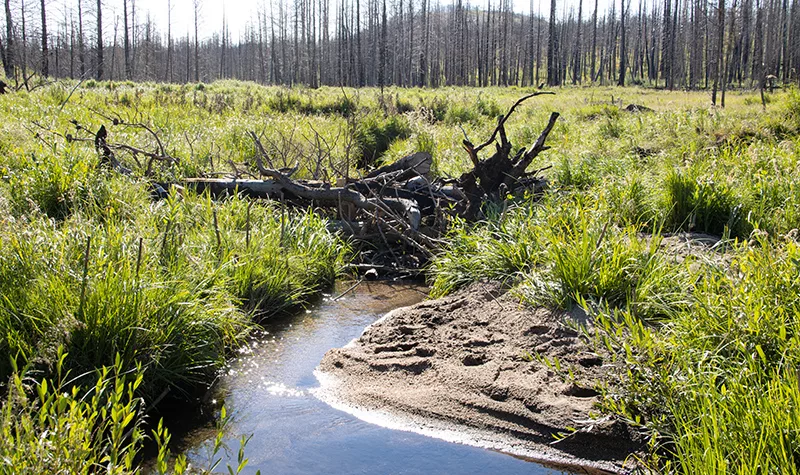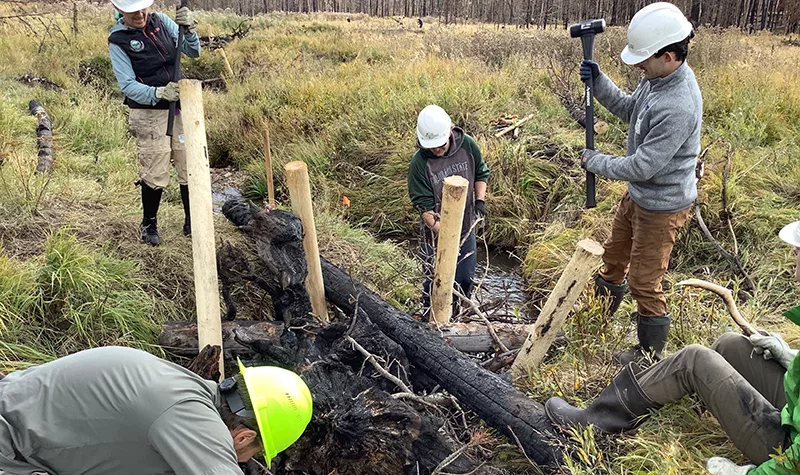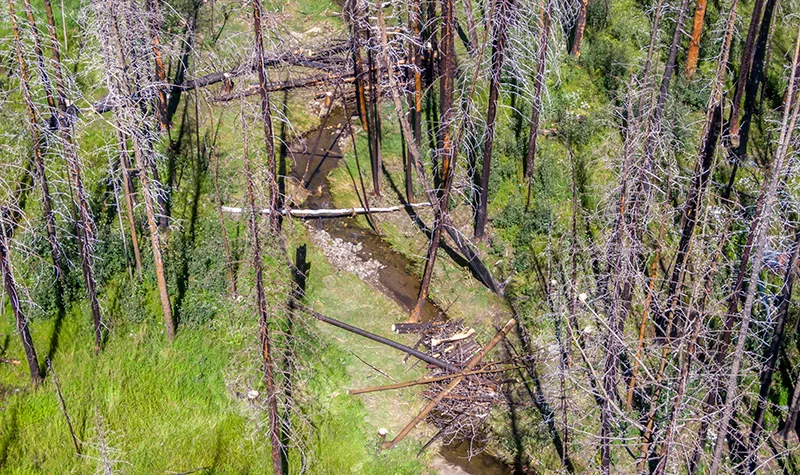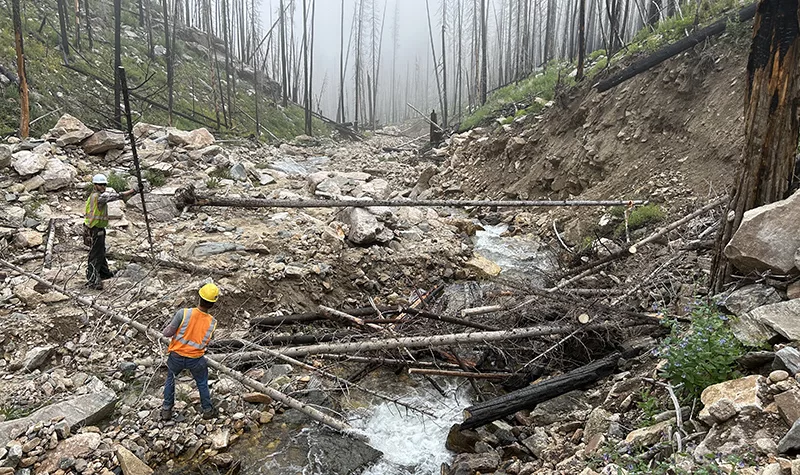A Guide to Low-tech Process-based Restoration

- What is Low-tech Process-based Restoration?
- The Need and History of LTPBR
- Total Benefits of LTPBR
- LTPBR Goals and Ideology
- Top Applications for LTPBR
What is Low-tech Process-based Restoration?
Low-tech Process-based Restoration (LTPBR) is a cost-effective and scalable approach to stream restoration that creates flow complexity in streams through use of increased roughness, resulting in less energy, a return of self-sustaining processes, and reconnecting to the surrounding floodplain. The installation is then monitored and adjusted based on flow patterns and material efficacy – making it process-based.

About the Expert:
Colin Barry, PG, CFM, is a geomorphologist with more than eight years of experience using geomorphic analyses that integrate hydrology, hydraulics, sediment transport, geology, and geomorphology to develop process-based understandings of fluvial system dynamics for a wide range of projects and clients.
The Need and History of LTPBR
The U.S. Environmental Protection Agency (USEPA) reported that 46% of the streams in the United States are in poor biological condition. This is a result of several factors including human simplification of stream systems often disconnecting them from their floodplains. Ellen Wohl, professor of geomorphology at Colorado State University said, “we have simplified our headwaters into ditches… Like a tree that’s had all its branches cut off… All those branches are really important to the health of the tree.” A stream cut off from its floodplain is cut off from important ecological processes needed for the stream’s wellbeing. In recent years, restoration projects that encourage stream complexity and floodplain connectivity have become increasingly common. However, when we build these restoration projects, we can only ever build a few miles at a time due to cost and regulation. Restoration projects that return complexity to riparian systems need to be cheaper and faster to build.
By using simple, hand-built, low-cost, natural structures, LTPBR often mimics beavers by adding large woody material (LWM), native willow planting, and even some native stone to degraded and simplified reaches. The result being a stream with increased flow complexity and a method that is cost effective and scalable.

Total Benefits of LTPBR
Cost and Accessibility
LTPBR structures can be assembled by hand crews and do not require expensive heavy machinery. It expands restoration access to new locations where machinery cannot go.
Scalable
LTPBR works best when part of a larger whole. Many structures along with other recovery practices can contribute to the healing of an entire watershed.
Permit Process
Permitting tends to be much less intensive for LTPBR. For example, 404 permitting typically falls under a nationwide permit.
Quick Turn-around Time
LTPBR structures can be built very quickly. Once they are familiar with construction, a crew of four can build eight structures a day. This can be extremely useful in scenarios where emergency funding and recovery must occur swiftly.

LTPBR Goals and Ideology
Do No Harm
Respect what is providing ecological benefit in an existing system and don’t assume that the proposed improvements will automatically do certain jobs better.
Slow the Flow
Reduced velocities are vital to unlocking the full riparian potential. The historic focus on flood conveyance has drained and narrowed stream corridors, limiting the spatial extents and positive impact that water can provide.
Redundant Features
Install features in series to increase project resiliency, allow the structures to support one another, and allow the stream opportunities to recruit more wood.
Use Available Materials
Importing material typically drives construction costs and increases impacts. Instead, design to use readily available materials, like on-site willow stakes, native grasses and soil, large wood, and even native rock.
Let the Stream Do the Work
Provide the ingredients and kick start the processes, but leave the hard work to the stream. This will take time and patience. Degradation that occurred over centuries cannot be undone in one construction season. Because results take time, monitoring and adaptive management is key to reaching goals.
Messy is Best
LTPBR is meant to mimic and work with natural processes. Do not spend too much time getting these features absolutely perfect. Instead, spend the time scaling up the total number of features. The river will end up moving and burying them into an orientation that works best.

Top Applications for LTPBR
While the applications of this solution are ever evolving and the quantitative data is slowly growing, there are several known cases that LTBPR is successfully being employed in. What’s important to understand is where the tech does its best work, then through that lens there becomes a plethora of relevant project options.
LTPBR performs best on systems in relatively flat, depositional areas where flow can easily spread on overbanks areas. Other indicators that this application may be a good option to explore are constraints due to low budget and/or remote areas with lack of access for heavy machinery. Below are some application examples of LTPBR:
Urban Watershed Stream Restoration
Low-tech log structures are being used as a part of greater stream restoration efforts in Fort Collins, Colorado, to roughen the overbanks of a stream, creating slower speeds and improving the effects of storm events. The LWM also provides habitat and food to macroinvertebrates and native darting fish.
Dam Breach Rehabilitation
A dam owned by the Natural Resources Conservation Service (NRCS) in southwest Wisconsin breached in 2018. Due to the resulting steep slope and high velocities, the stream that is now flowing through it is severely degrading the system as a whole. Low-tech features like log structures and willows will help slow down flow velocities.
Other Applications
- Burned systems
- Site specific bank erosion mitigation
- Any restoration on wadeable streams
- As a part of larger restoration projects (high-tech, process-based restoration)
Consider LTPBR Next Time
If the conditions are right and LTBPR makes sense, consider it a solution in your next restoration project. The tech has promising applications, some still emerging, that have the potential to solve for the degrading streams and ecosystems we rely on. Affordably scaling vital ecological and sustainability practices earns LTPBR a seat among the slew of solutions to consider as we look to the future of hydrologic restoration work.

Comments are closed.